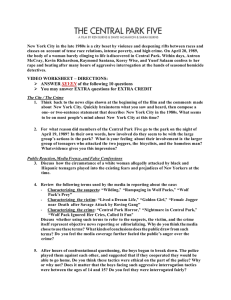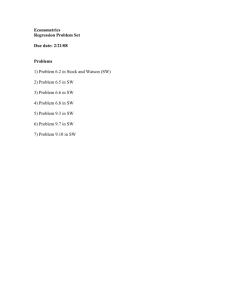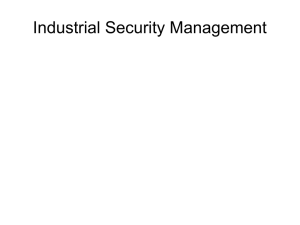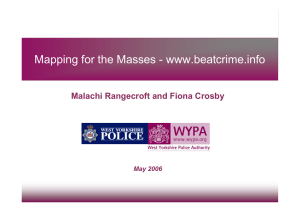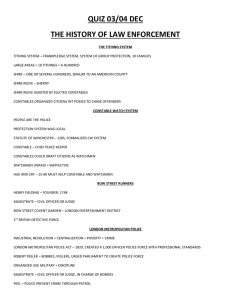Chapter 1 The Evolution of Private Security: A Brief History
advertisement
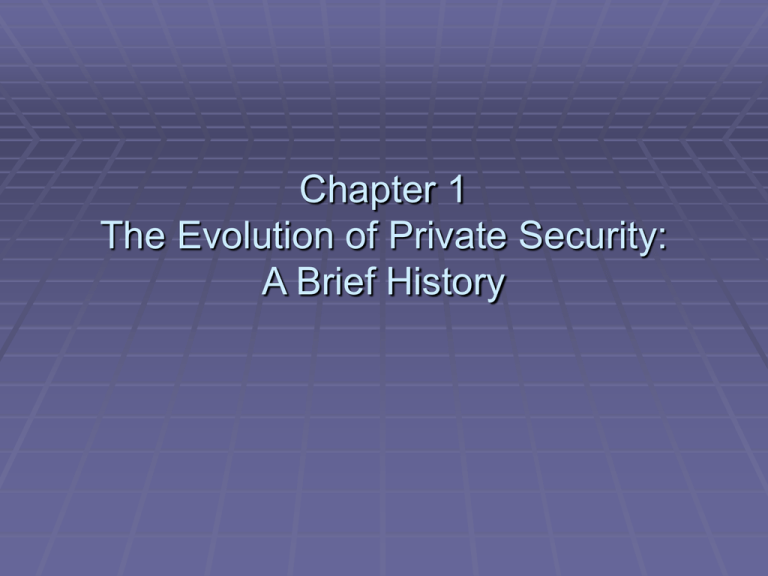
Chapter 1 The Evolution of Private Security: A Brief History Introduction Reith’s 4 phases in evolution of quest for security. The search for collective security. Need for rules and laws. Some people would not obey laws. The means to compel observance of rules found. Private Security Separation of private and public security happened in 19th century. Private security evolved from need for additional, individual protection for humans and their property. Ancient Times Ancient people used physical security such as weapons, lake or cliff dwellings, walls and gates. Example: Great Wall of China. Rulers began to appoint enforcement people to help with public and private security. Evolution of early police and fire protection. The Middle Ages Tithings-groups of 10 responsible for law and order in England. With Norman Conquest came the Frankpledge system. All free Englishmen had to swear to maintain the peace 1215-Magna Carta gave Englishmen “due process” of law and created foundation for modern justice. Middle Ages 1285-Statute of Westminster established: Watch and ward-town watchmen. Hue and cry-response to resistance. Assize of arms-weapons in the homes. Merchants dissatisfied. Hired private security. The Eighteenth Century Industrial Revolution brought more crime to cities. Increased private policing. Military used to suppress riots. Magistrate system evolved. Fielding-advocate of crime prevention. Bow Street Runners-professional detective agency. The Eighteenth Century Pitt’s Reform Bill to establish a strong police force defeated. Middlesex Justice Bill successful. Colquhoun used statistics to argue for large police force. He also established a private security force. Nineteenth Century England Sir Robert Peel’s Metropolitan Police Act created the London Metropolitan Police to prevent crime. Two objectives: Prevent crime and disorder. Test of police efficiency is absence of crime and disorder. Evolution of Private Security in US Primary means of security in USconstables and night town watchmen. Mid-1800s saw the first full-time police forces. Private railroad security developed for interstate railway crime. Alan Pinkerton developed contract security forces. Other Security Advances First electric burglar alarm systems-1853. Central monitoring systems later in the century. Brink established armored car and courier services. Establishment of Burns’ Detective Agency. The World Wars and the Depression Fear of sabotage and espionage. Private security very high during WWI. Declined during depression. WWII saw a significant increase in private security. Heightened emphasis on government security. Increase in plant security for industry. Contemporary Private Security Increase in governmental regulations. Public police unable to meet all needs. Development of Wackenhut Corporationcontract guard and investigative agency. In-house security systems. Preventive philosophy of private security. By 1990s, private security a multibilliondollar-a-year business. Summary Questions How has private security differed from public law enforcement throughout history? Identify the security measures uses in ancient times, Middle Ages, Eighteenth Century England, Early Colonial America. Identify the security established by the tithing system, the Frankpledge system, the Magna Carta, the Statute of Manchester. Summary Questions Identify contributions to private security made by Fielding, Colquhoun, Peel, Pinkerton, Brink, Burn, Wackenhut. What role did railroad police play in the evolution of private security? Discuss the impact of the world wars on private security. What was the status of private security by the 1990s?






